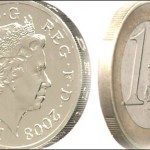Natural gas advanced on Wednesday as weather forecasting models called for below-normal temperatures over many densely-populated US areas. The energy source continued to be supported by speculation that a government report may show a record drop in US gas supplies, following last weeks chilly weather conditions.
On the New York Mercantile Exchange, natural gas for delivery in February rose by 0.96% to trade at $4.411 per million British thermal units by 11:45 GMT. Prices hit a session high at $4.412 per mBtu, the strongest level since January 7th, while day’s low was touched at $4.335 per mBtu.
The February contract surged by 5.4% to close at $4.297 per mBtu on Monday, marking the largest daily increase since April 29. Last week, the energy source declined 5.7%, after losing 0.4% in the previous 5-day period. However, prices settled last year 26% higher, the best performance since 2005 and second straight annual advance.
Short-term cold weather outlook
NatGasWeather.com reported on January 15th that a cold outbreak already pushed through the central US and is now advancing into the eastern US. The cold front will bring light snowfall in some localized areas, possibly even deep into the Southeast. Additional reinforcing blasts of cold air will push deep into the central and southeastern US over the next 10 days. Each of the outbreaks has the potential to bring several inches of snow, especially over the Midwest and Northeast.
The initial cold blast today will be followed by a second Thursday into Friday and yet another Saturday into Sunday. Mild and dry conditions are expected over the western US. According to the website the weather pattern in the coming weeks will clearly support natural gas prices, even if the snowfall remains scarce.
Extended forecast
NatGasWeather.com’s extended forecast for the week ended January 29th, called for low pressure to remain over the eastern half of the country and dry and warm conditions over the western US. Parts of the Midwest and all of the East will most likely experience below-normal temperatures. The timing of the cold blasts is still challenging, but with so many reinforcing shots of cold air, the natural gas demand in the eastern part of the US, is predicted to be high.
According to AccuWeather.com, temperatures in Cleveland on January 22nd may bottom at 11 degrees Fahrenheit, 12 below average, while the low in Chicago may hit 11 degrees, beneath the average of 18 degrees. Temperatures in Indianapolis are expected to bottom at 11 degrees Fahrenheit, 9 below normal.
When cold weather is expected, natural gas surges as increased electricity demand to power air-conditioning calls for more supply of the fuel, which is used for a quarter of U.S. electricity generation. Above-average readings in the winter season have the opposite effect. Consumption usually picks up from November through March. According to the Energy Information Administration, power generation accounts for 32% of U.S. gas demand and 49% of U.S. households use the energy source for heating.
US gas inventories levels
“Gas inventories probably fell by 303 billion cubic feet in the week ended January 10”, according to a report by Citi Futures Perspective, cited by Bloomberg. This will exceed the largest-ever withdrawal of 285 billion cubic feet, registered in the week ended December 13th. The Energy Information Association is scheduled to release its weekly US gas inventories report on January 16th.
Total gas held in underground storage hubs equaled 2.817 trillion cubic feet as of January 3rd, 15.8% below last year’s 3.345 trillion stored. The deficit to the five-year average widened to a record 10.1% from 8.9% in the preceding week.





